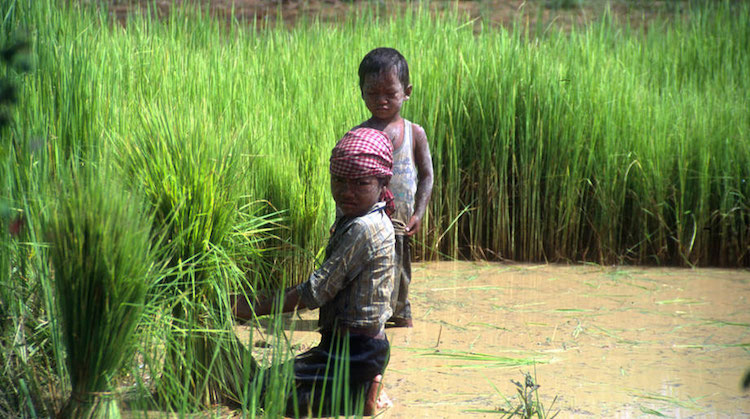
By Jaya Ramachandran
GENEVA (IDN) – Child labour is rampant around the world: some 168 million children working in various sectors of the economy – ranging from agriculture to mining, from manufacturing to tourism – are producing goods and services consumed by millions every day.
Marking the World Day against Child Labour on June 12, the United Nations International Labour Organization (ILO) has drawn the focus on the plight of children toiling in some of the most hazardous jobs.
“That child labour has no place in well-functioning and well-regulated markets is evident. But the reality is that today, child labour remains widespread in supply chains,” said ILO Director-General Guy Ryder in a statement that focussed on child labour and supply chains.
The fight against child labour requires coherent policy packages to support legislation aimed at quality education, social protection and decent jobs for parents, he said.
Ryder underscored that of the total number of children in child labour, 85 million are in hazardous work. He also pointed out that child labour occurs predominantly in the rural and informal economies, beyond the reach of labour inspection, the protection of workers’ organizations or the governance benefits of employers’ and producers’ organizations.
“It’s not just the lack of institutional protection in the rural and informal economies that increases the risk of child labour in supply chains; in household production and on family farms, children are often highly vulnerable because parents’ incomes are insufficient or because small family enterprises and farms cannot afford to replace child labour by hiring adults and youth,” Ryder said.
“Piece rate production increases the risk with child labour helping parents to make up quotas and to assure family survival when parents are not earning a living wage,” he added.
The ILO Director-General emphasized that while global supply chains can offer opportunities for inclusive development for supplier firms, workers and host countries, targeted action is needed to assure just outcomes.
“Beyond child labour in high profile, global supply chains, many child labourers are also found in supply chains producing for local and national consumption and they must not be ignored,” he said.
“There are encouraging signs of a will to act and to prevent child labour, to achieve greater transparency and visibility along supply chains as well as more effective enforcement of relevant laws,” he added.
Ryder highlighted that ILO’s Minimum Age Convention, 1973 (No. 138) has been ratified by 168 Member States and the Worst Forms of Child Labour Convention, 1999 (No. 182) by 180 – near universal ratification.
In addition, he said that companies are increasingly exploring how they might contribute to eliminating child labour by strengthening the capacity of enterprises throughout their supply chains – a complex task requiring partnerships involving Governments, industry peers and employers’ and workers’ organizations.
In that regard, he noted that forums such as the ILO’s Child Labour Platform allow enterprises to share good practices and develop new models for collaboration.
“Global Framework Agreements between global trade union federations and multinational companies are one expression of global cooperation through social dialogue. At the grass-roots of value chains too, rural workers’ and informal workers’ organizations are expanding innovative approaches to strengthen collective representation,” the ILO chief said.
Ryder also highlighted that the ILO’s Tripartite Declaration of Principles concerning multinational enterprises and social policy of 1977 recognizes the role of enterprises in the elimination of child labour. With a focus on development and strengthening of enterprise capacity and social dialogue, the declaration holds “great potential to guide action against child labour”, he said.
He also stressed that the 2030 Agenda for Sustainable Development reaffirms the goal of ending child labour. “Acting together, it is within our means to make the future of work a future without child labour,” Ryder concluded.
ILO has launched a mobile application that allows business managers and auditors to create interactive checklists that will help them ensure a child labour-free operation. There are 18 checkpoints in total, divided into six categories. Each checkpoint provides best-practice recommendations for taking action.
Ahead of World Day Against Child Labour, the ILO’s Red Card to Child Labour Campaign was launched with an original song, ‘Til Everyone Can See. by Incubus guitarist Mike Einziger and violinist Ann Marie Simpson, with featured artists Travis Barker, Minh Dang, Dominic Lewis, LIZ, Pharrell Williams, and Hans Zimmer.
This comes in the aftermath of the Music Against Child Labour Initiative, launched in 2013 by the ILO and some of the world’s greatest musicians, calling on musicians worldwide to dedicate a concert or song to the struggle against child labour. [IDN-InDepthNews – 12 June 2016]
IDN is flagship agency of the International Press Syndicate.
Photo: Child labour on family farms Credit: FAO/J. Thompson
2016 IDN-InDepthNews | Analysis That Matters
Send your comment | Subscribe to IDN newsletter
Follow us on Twitter and Facebook:
http://twitter.com/InDepthNews
http://www.facebook.com/IDN.GoingDeep











